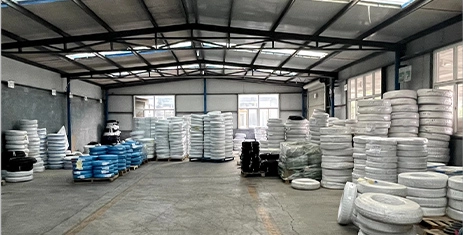slip on pipe coupling
Understanding Slip-On Pipe Couplings
Slip-on pipe couplings are essential components in piping systems, offering a versatile solution for joining two sections of pipe. This type of coupling is widely used in various industries, including oil and gas, chemical processing, water treatment, and construction, due to its ease of installation and reliability.
Design and Construction
A slip-on pipe coupling is designed to fit over the ends of two pipes, allowing them to be slid together to create a secure connection. Typically manufactured from materials such as carbon steel, stainless steel, or other alloys, these couplings provide excellent durability and resistance to corrosion. The internal surface of the coupling is often machined to ensure a snug fit, minimizing the risk of leaks.
Installation
One of the key advantages of slip-on couplings is their straightforward installation process. Unlike welded couplings, which require specialized equipment and skilled labor, slip-on couplings can often be installed using basic tools. The pipes are simply positioned inside the coupling, which can then be secured with welding or mechanical fasteners, depending on the application's requirements. This ease of use makes slip-on couplings an attractive choice for both professional and DIY applications.
Applications
slip on pipe coupling

Slip-on pipe couplings are particularly advantageous in situations where pipes must be joined quickly and efficiently. Common applications include the construction of pipelines for transporting gas, oil, water, and other fluids. They are also utilized in building frameworks, where structural integrity is vital. Furthermore, slip-on couplings are often preferred in situations where the piping system may need to be disassembled or modified, as they allow for easier removal than welded joints.
Advantages
The primary advantages of slip-on couplings include
1. Simplicity The design allows for an uncomplicated installation process, saving time and labor costs. 2. Cost-Effectiveness Typically, they are more affordable than alternative joining methods such as welding or threaded couplings. 3. Flexibility Their ability to accommodate slight misalignments makes them suitable for various piping configurations. 4. Maintenance Slip-on couplings can be easily accessed for inspection and maintenance, providing a practical solution in complex piping systems.
Conclusion
In conclusion, slip-on pipe couplings represent a valuable option for joining pipes in various applications. Their combination of durability, ease of installation, and cost-effectiveness makes them a preferred choice for many industries. Understanding the function and benefits of slip-on couplings can help engineers and construction professionals make informed decisions when designing and implementing piping systems. As industries continue to evolve, these couplings will remain a fundamental aspect of efficient and effective pipe management.
-
Ultimate Spiral Protection for Hoses & CablesNewsJun.26,2025
-
The Ultimate Quick-Connect Solutions for Every NeedNewsJun.26,2025
-
SAE J1401 Brake Hose: Reliable Choice for Safe BrakingNewsJun.26,2025
-
Reliable J2064 A/C Hoses for Real-World Cooling NeedsNewsJun.26,2025
-
Heavy-Duty Sewer Jetting Hoses Built to LastNewsJun.26,2025
-
Fix Power Steering Tube Leaks Fast – Durable & Affordable SolutionNewsJun.26,2025

